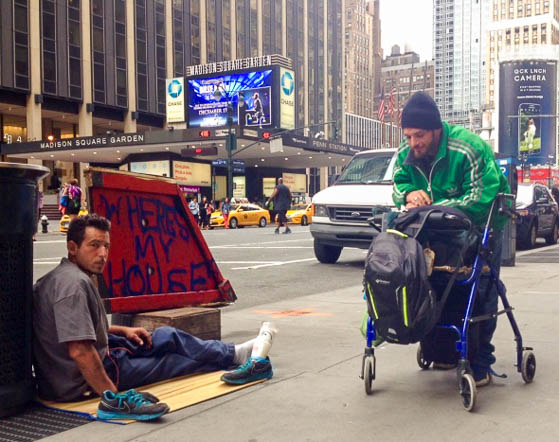
A new $30 million initiative, Connections to Care, led by first lady Chirlane McCray and the Mayor’s Fund to Advance New York City, opened its doors to nonprofits in early September. The program aims to address mental illness among lower income residents and the homeless by training non-professionals to help provide mental health services at nonprofit organizations citywide. Those services will include screening, motivational interviews and psycho-education.
This is the de Blasio administration’s first private-public partnership, and the largest in the history of the Mayor’s Fund, a 501(c) nonprofit created 21 years ago by the Guiliani administration. To jumpstart CTC, the Mayor’s Fund received a $10 million grant from the Corporation for National and Community Service (the Federal agency mostly known for its AmeriCorps program) and $20 million from private donors including the Chapman Perelman Foundation, the Benificus Foundation, and anonymous donors.
Training and implementation is to start this January with the help of the Center for Economic Opportunity and the Department of Health and Mental Hygiene. The deadline to apply for CTC’s services is Oct. 19, in advance of the administration’s plan to overhaul the city’s approach to mental health outreach and care.
The notion behind CTC is simple: Familiar faces will reduce the stigma that keeps people who are mentally ill from seeking help. “When they’ve experienced an illness like schizophrenia and bi-polar disorder, they’ve had a very unique experience,” said Ashley Womble, communications director at Fountain House, a self-help program in Chelsea that since 1948 has dedicated itself to recovery from serious mental illness, “and they seek out people who have had some of the same struggles and experiences.”
CTC’s model emulates The Door, an outreach program located in Soho, where McCray announced the initiative last July. The program serves approximately 10,000 members ages 12 to 24. Between counseling sessions and weekly group sessions, more than 1,500 young people accessed mental health support. “Mental health and wellness is really part of every program here in some way or another, whether it’s a basketball coach, dj instructor or janitor, you never know who the members will feel comfortable with,” said Kristen Rubisch, communications and marketing manager. “Mental health and wellness can turn people off and we’re trying to work our way around that. It’s underfunded and this is another way to accommodate.” She said that there aren’t many programs like The Door in cities around the U.S.: “It’s not the most common approach.”
According to a study published last June by the NYC Department Of Mental Health and Hygiene, nearly 40 percent of adult New Yorkers with serious mental illness did not receive help in the past year, with Chelsea-Village residents least likely to have received counseling or prescription medication. “You get afraid because it’s a new step,” said Javier Morales, 44, who has lived on and off the streets since the ’80s, outside The Holy Apostles Soup Kitchen at 28th and 9th avenue. “If the places give you the resources to evaluate you the right way and work with you on a one-on-one basis or a family basis, they can see where that problem might be coming from.” Morales believes that living on the street itself leads to a kind of mental illness, what he refers to as a “defense-shell.”
“The street, it weighs a lot,” he said. “You got to sleep with one eye open and one eye closed sometime. After a while of that, many years of that, being accustomed to that, your mindset is on the defense. So you develop a lot of deficiencies.”
To determine the program’s effectiveness, CTC will select an evaluator to collect data from the 12 citywide locations to determine impact and cost. Research conducted by the journal Primary Care and Community Psychiatry 2008 indicates that “para-professional training in mental health may improve outcomes in mental health in low- and middle-income countries.”
“Everybody’s really excited about it,” said Martin Blair, director of communications for the Mental Health Association of New York City. “We’re not quite sure what they’re going to do. That’s just a given because it’s the early stages of this.”